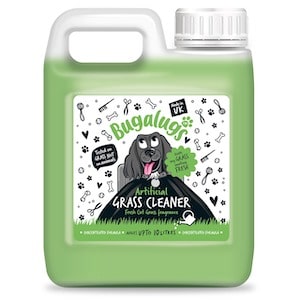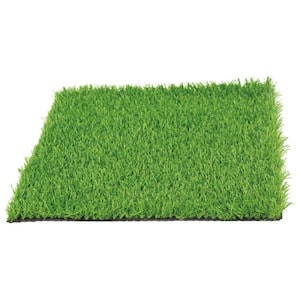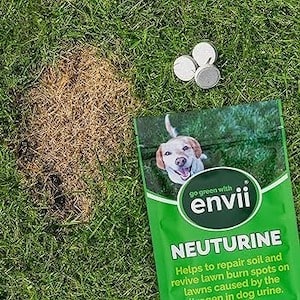Welcome to the hilarious hustle of post-seeding pet parenthood! You’ve sown the seeds for a lush lawn, but your furry friend has different plans, and now you are wondering How long to keep a dog off the grass after seeding.🌱
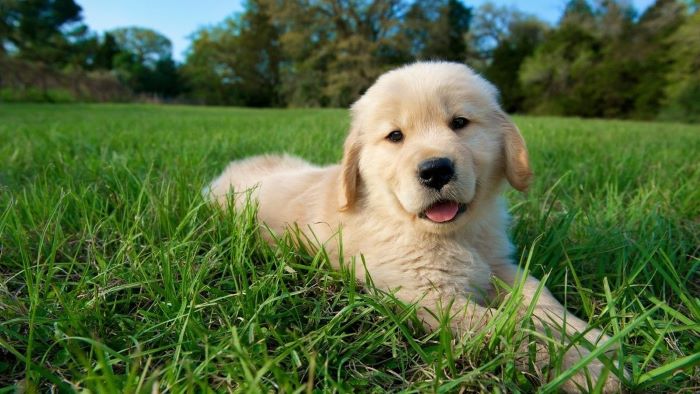
Join us as we delve into grass growth and find humour in confusion. With treats in hand, let’s tackle lawn dreams while your pup turns the yard into their playground. Balancing green goals and canine curiosity is a laugh-packed challenge we’re about to hit!🐾
You Might Also Like:
How Long to Keep a Dog off the Grass After Seeding?
The recommended duration for keeping a dog off the grass after seeding is typically around 2 to 4 weeks.🗓️ However, it’s important to note that the exact duration can vary based on factors such as the specific type of grass you’ve seeded, local climate conditions, and the instructions provided on the seed packaging. 🌾
Always follow the guidelines provided with your chosen grass seed📝 and consult with lawn care professionals if you’re uncertain about the appropriate duration for your particular situation.
Factors Influencing Successful Grass Growth
Several factors play a pivotal role in determining the success of grass growth:
- Soil Preparation: Properly preparing the soil before seeding is crucial. Clear debris, level the ground, and ensure good soil contact for the seeds to establish strong roots.🌱
- Seed Selection: Choose grass seed varieties that are well-suited for your climate, soil type, and intended use. Some grasses are more tolerant of foot traffic and pet activities.
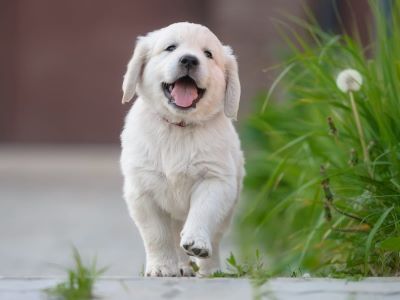
- Watering: Consistent and adequate watering is essential for seed germination and early growth. Avoid overwatering, which can lead to disease and shallow root development.💧
- Temperature: Soil temperature impacts seed germination. Plant when the soil temperature is ideal for your chosen grass type.
- Protection from Disturbances: Dogs, along with foot traffic and wildlife, can disrupt the seeding process. Creating barriers or keeping dogs off the grass until it’s established prevents damage.
- Maintenance: Regular mowing, fertilization, and proper weed control are vital for maintaining a healthy lawn after germination.🏡
Why Keeping Dogs off Newly Seeded Grass Is Vital
When it comes to the health and growth of your newly seeded grass, keeping dogs off the area is more than just a precaution. Here’s why:
1. Potential Damage Caused by Dogs
Dogs are naturally curious and playful creatures, and their activities on newly seeded grass can inadvertently lead to significant damage. Their paws can compact the soil, making it harder for delicate roots to penetrate and establish themselves.
This soil compaction limits the availability of oxygen and nutrients that young grass needs to grow strong. Additionally, their running, jumping, and rough play can dislodge seeds and seedlings, disrupting their growth patterns.🐾
By keeping dogs off newly seeded grass, you’re giving the grass the time it needs to establish itself and grow without interference. This allows the roots to anchor firmly in the soil, enabling the grass to absorb nutrients, water, and sunlight effectively.
2. Impact of Dog Urine and Digging on Young Grass
Dog urine, while rich in nitrogen, can be harmful to young grass if concentrated in a small area[1]. The high nitrogen content can actually burn the grass and create uneven patches of discolouration. This is known as “urine burn” and can leave unsightly brown spots on your newly seeded lawn.
Similarly, dogs’ digging behaviour can uproot delicate seedlings and disrupt the even distribution of seeds, resulting in patchy and uneven growth.🐶
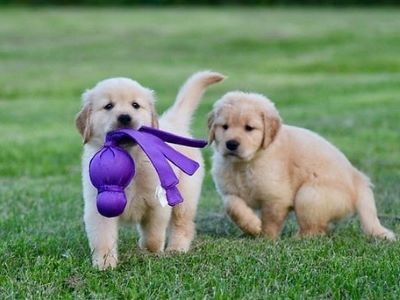
A little patience during this critical period can yield a healthier, more vibrant lawn in the long run. Remember, a small investment in time now can lead to a flourishing and dog-friendly lawn later.
Guideline for Keeping Dogs off Newly Seeded Grass
Start your lawn journey by carefully reading and sticking to the instructions of seed manufacturers as they provide specific guidance on when it’s safe to allow dogs back into the newly seeded area. These instructions are tailored to the particular seed variety, let’s have a look:
- Initial Phase: During the germination period, which typically lasts around 1 to 3 weeks depending on the grass type, it’s crucial to completely prevent your dog from accessing the freshly seeded section. This is the most delicate stage, where any trampling or digging could have a negative impact on the young seedlings.🌾
- Use of Fencing: Set up temporary barriers or fencing around the newly seeded area to physically block your dog’s access. These barriers not only keep your dog out but also act as a visual reminder for family members and guests to avoid the area as well.🚧
- Intermediate Phase: As the grass enters the early growth phase, typically around 4 to 6 weeks after seeding, you can start allowing limited and supervised access for your dog.
- Use of Designated Paths for Dog Walking: Encourage your dog to stick to designated paths or walkways when crossing the newly seeded grass. By training your dog to follow specific routes, you’re ensuring that the growth is distributed more evenly across the lawn.🛣️
- Complete Access Phase: Once your grass has established strong roots and has visibly grown, usually after about 8 to 10 weeks, you can gradually reintroduce regular pet activities to the area. Keep in mind that even in this phase, it’s a good idea to maintain a balance between your dog’s enjoyment and the lawn’s well-being.
- Continued Monitoring: If you notice any signs of stress, such as patches of thin or discoloured grass, adjust your approach accordingly. Flexibility is key; every lawn and dog is unique, so adapting your strategy based on their specific needs can lead to the best results.
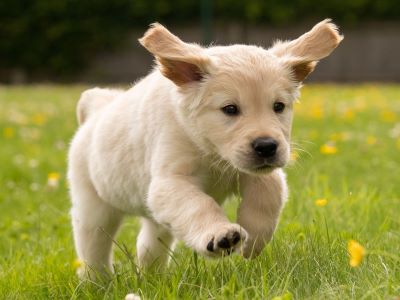
Managing Dog Behavior During the Waiting Period
Understanding the waiting period before allowing your dog back on newly seeded grass involves considering various factors. Here are some of them:
Regular Exercise and Playtime
During the waiting period, it’s important to ensure that your dog continues to receive regular exercise and mental stimulation[2]. Engaging in activities like interactive toy play, indoor games, and supervised walks can redirect their energy away from the seeded area.
This helps prevent boredom and minimizes the temptation for your dog to venture onto the off-limits grass.
Training Dogs
“Some people propose that dogs might turn to eating grass when they don’t feel well as a way to make themselves vomit, and then feel better”, says the expert at WebMD.
Training your dog to respect the boundaries of the newly seeded area is a key aspect of managing their behaviour. Use verbal cues like “stay” or “off” to establish commands that signal where your dog is allowed. 🐶
Positive reinforcement, such as treats and praise, can reinforce their understanding of these commands. Consistency is crucial, so continue practising these commands until they become second nature to your dog.🏞️
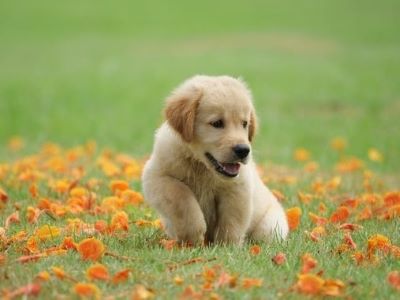
Utilizing Pet-Friendly Barriers
Pet-friendly deterrents are valuable tools in discouraging dogs from entering seeded sections. These products, available at pet stores, emit scents or textures that dogs find unappealing.
Applying these deterrents along the perimeter of the seeded area can create a psychological barrier that dissuades your dog from venturing too close. Just ensure that the deterrent is safe for both your dog and the grass.🐶🌱
Gradual Reintroduction
As the waiting period comes to an end and you prepare to allow your dog back onto the newly seeded grass, consider a gradual reintroduction.
Start by allowing supervised access for short periods, gradually extending the time as the grass establishes itself. This cautious approach reduces the risk of any accidental damage during the transition.
Monitoring
Throughout the waiting period and beyond, continue to observe your dog’s behaviour and the progress of the grass. If your dog shows signs of wanting to dig or play in the seeded area, redirect their attention to approved play zones. 🛝
Similarly, if the grass isn’t growing as expected, adjust your approach accordingly. Flexibility and proactive management contribute to a successful outcome.
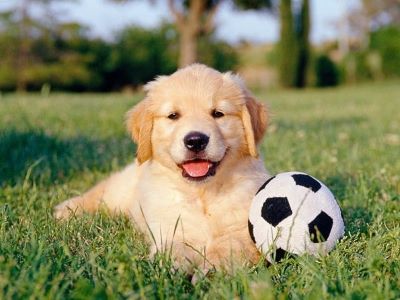
In summary, managing your dog’s behaviour during the waiting period involves a combination of training, redirection, and careful consideration of factors affecting the grass growth timeline.
Tips for Successful Lawn Establishment
Understand what motivates your dog’s behavior. For example, dogs may eat grass when they don’t feel well or have an upset stomach. Knowing why do dogs eat grass can help you address any underlying issues
Here are some tips for Creating a strong and healthy lawn that can handle the things dogs do:
- Maintenance: Keep the seeded area consistently moist, but avoid over-watering, which can lead to disease and shallow root growth. Use a gentle spray or mist to prevent disturbing the soil. As the grass grows, adjust your watering routine to encourage deep-root development.
- Potential Challenges: Dog-related challenges, such as urine spots and digging, can be managed with strategic planning. For urine spots, dilute the area with water immediately after your dog urinates to minimize the concentration of nitrogen. Redirect your dog’s energy with toys and designated play areas.🛝🧸
- Regular Inspection: Regularly inspect your newly seeded area to identify any signs of uneven growth, pests, or disease. Catching problems early allows you to take prompt action. If you notice issues like thinning grass or discolouration, assess the cause and adjust your care routine accordingly.
- Lawn Care Professional: Professionals can assess your soil, climate conditions, grass type, and potential challenges, offering personalized guidance on watering schedules, maintenance routines, and dog-friendly strategies. Their expertise can significantly contribute to the success of your lawn establishment project.👩⚕️
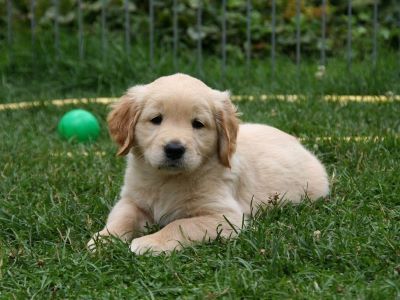
- Timing for Activities: Plan lawn care activities around your dog’s routine. Water the lawn and allow it to dry before letting your dog onto the grass. This minimizes soil compaction and mud tracking. Coordinate play and exercise sessions in areas where the grass is more established to reduce wear on freshly seeded sections.
- Patience and Consistency: Follow watering schedules, enforce dog restrictions as needed, and be vigilant about maintenance. Understand that results may not be immediate, but by staying consistent with the process, you’ll have a healthy, thriving lawn for both your dog’s activities and your desire for outdoor beauty.💚🌱
If you have artificial grass areas for your dog, don’t forget to clean them regularly to prevent urine odor buildup. Look for cleaners made specifically for artificial turf, like best artificial grass cleaner for dog urine UK, to help remove dog urine.
FAQs
Fastest Way to Grow Grass With Dogs?
Choose dog-friendly grass varieties. Avoid allergenic grass types. Adapt your yard’s landscaping. Hose down dog pee. Aerate the lawn for a rapid recovery. Nurture grass with dog-friendly fertilizers. Fill in bare patches promptly. Designate a doggy area.
Is Grass Seed Harmful for Dogs?
The reason that grass seeds can be dangerous for dogs (or even cats), is that they can easily penetrate their outer skin in multiple areas. If left untreated this can be incredibly painful – in worst-case scenarios, the internal damage it may cause can even be fatal.
What Is the Best Grass if You Have Dogs?
Bermudagrass. This grass is very tolerant of high traffic from dogs. Zoysia grass. This grass, like bermudagrass, is also a great pick due to its durability. Centipede grass. Fescue grass. Kentucky Bluegrass. Perineal Rye.
How Long to Keep a Dog off the Grass After Seeding?
It’s best to keep dogs off new grass for 8 weeks. Do not allow any pet traffic on your grass for the first 3–4 weeks after your lawn is newly seeded or sodded. Once the grass is established, keep pet traffic to a minimum for an additional 4 weeks. Your grass is ready for regular use after 8 weeks.
Why Do Puppies Eat Grass?
There are five main reasons why dogs eat grass. Some dogs will eat grass just because they like how it tastes or because it is a way for dogs to entertain themselves when they are bored. Other times, dogs will eat grass because they have an upset stomach, need more fibre in their diet, or have a diet deficiency.
Summary
In conclusion to solve your conclusion of How long to keep a dog off the grass after seeding? Remember that the waiting period for allowing dogs on newly seeded grass may vary based on the specific grass type, seed variety, climate, and other local conditions.🌈
Balancing your pet’s needs with your lawn’s requirements will contribute to a thriving outdoor environment for your furry friend and your garden. You can find tips on how to stop dog urine from killing grass naturally to maintain a healthy lawn. You’re finding the right balance.🐶🌱
This isn’t just about growing grass; it’s about making happiness and balance. So, let your grass be healthy, and let your dog have fun!🐕🦺🐾
Reference:
- Allen, J., Setälä, H., & Kotze, D. J. (2020). Dog urine has acute impacts on soil chemistry in urban greenspaces. Frontiers in Ecology and Evolution, 8. Frontiers
- Benefits of Exercising with your Dog | VMBS News. (2022, March 11). Texas A&M University
